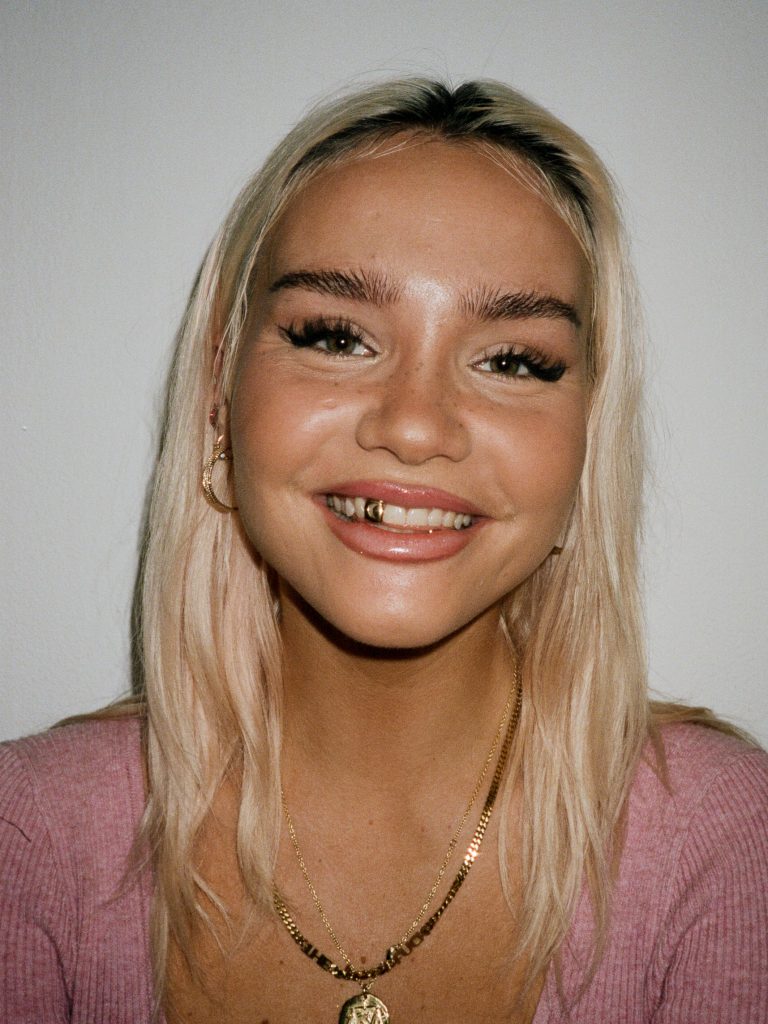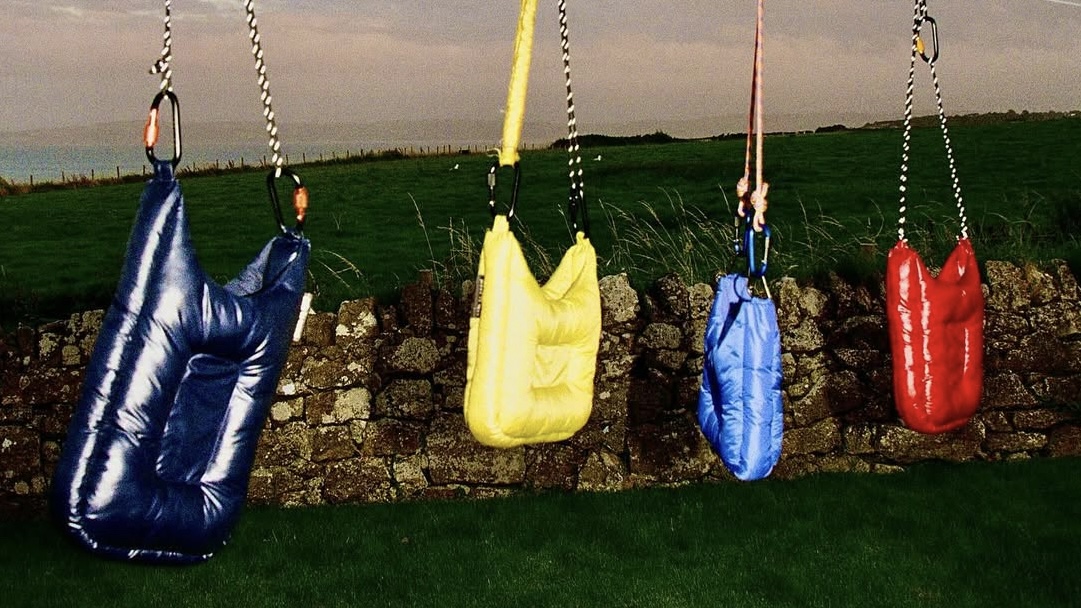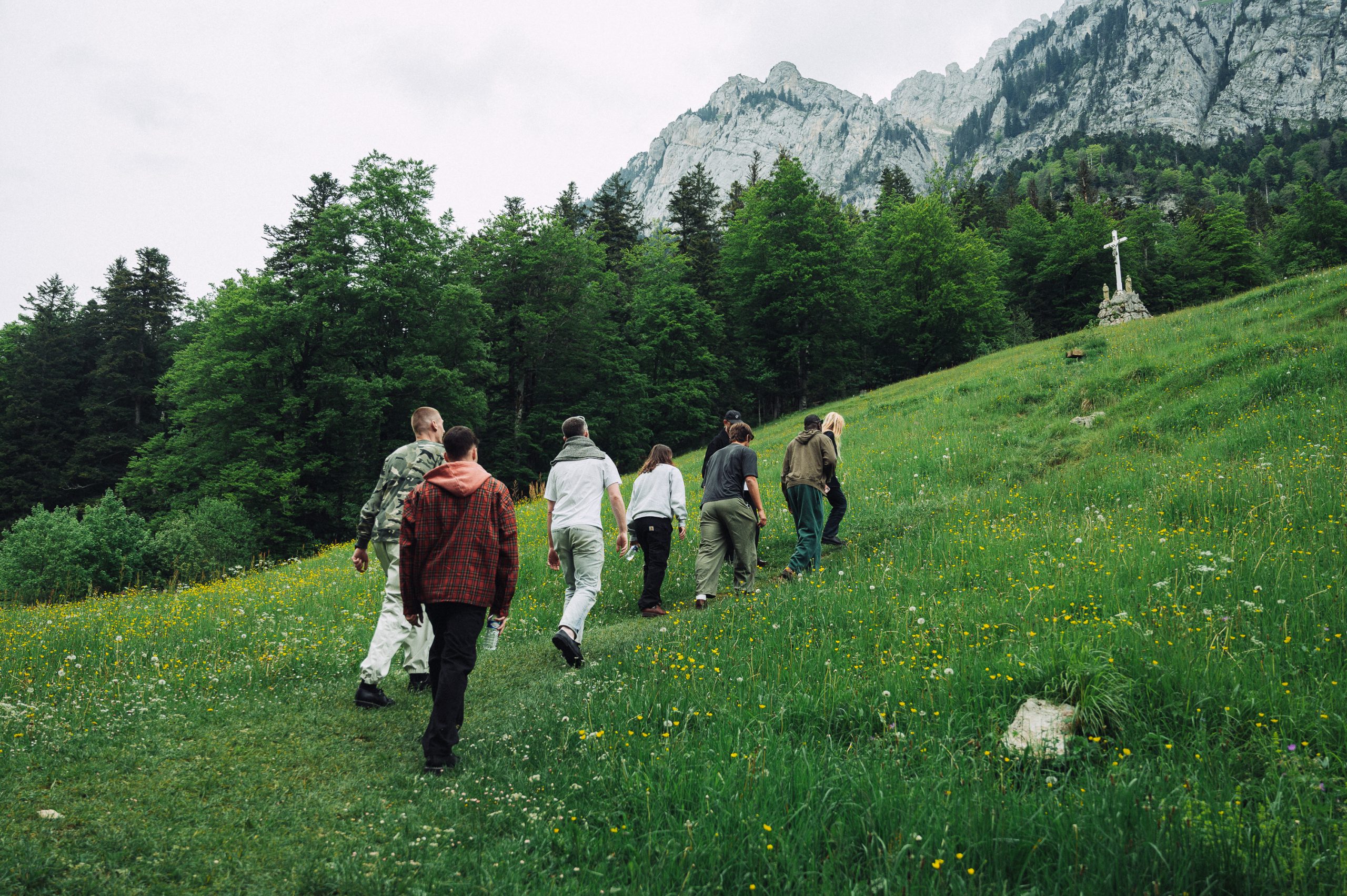“Show ya grill if you will, and you down with the trill”
A counterculture staple that lives not on the body but inside it, revealed through cheesy grins and grit-toothed snarls, there’s surely no item of jewellery more personal than a grill ($24 million forehead implants of the pink diamond variety, excluded). Tailor-made to a unique oral make-up of tooth and gum, involving bespoke dental moulds and days of labour-intensive studio design, we can all share rings, but a grill that perfectly cups your snaggle tooth with 5 rows of precious gemstones? Not as likely. That shit’s one of one.
For decades, these iced-out caps have been part and parcel of a braggadocious uniform in the world of fashion and music – hitting it biggest in the realms of 90s/00s rap and r&b. From sleek top sets donned by Slick Rick and A$AP Rocky, right down to Michele Lamy’s crooked gold caps and Jessica Simpson’s oh-so-aughties pink-diamond mouthguard, this endless range of customisable possibilities does all beg the question: how did the concept of dental jewellery become such a cultural phenomenon?


The lineage of these shiny hunks of metal can be traced well beyond the powerhouse rappers of yesteryear, dating back thousands of years to the wealthy circles of Etruscan Italy around 800 to 200 BC. Albeit slightly more basic than the individually-capped creations we’re familiar with today, wealthy Etruscans first adopted these divine works of dental magic as a means of flaunting their wealth beyond traditional acquisitions of property and armies, sometimes knocking out their own gnashers entirely to replace them with a flat gold band, “used to hold a false tooth/teeth, or to stabilise teeth loosened by periodontal disease,” writes Marshall Joseph Becker in the American Journal of Archaeology.
A few generations later, between 300 AD and 900 AD, affluent Mayans would take it a step further and drill small holes into their existing teeth, filling the gaps with precious gems such as jade, quartz and hematite as indicators of class and style. While we imagine the pain was somewhat excruciating in the absence of local anaesthetic, it does prove that blinged-out drip (and suffering for fashion) is by no means a phenomenon of the modern age, nor a choice made outside the vacuum of politics.
The notion of glowing your teeth up for clout went international as centuries progressed with the practice adopted in different guises and by various cultures worldwide. Cut to New York in the 1970s, however, and the picture of how grills in their current form came to dominate culture becomes a little clearer. This was a time in which the city was plagued with immense economic stagnation, and with no money came no dental care (millennials can I get a hhoooyeeah?) For reasons as practical as they were cosmetic, gold infills became a cheaper and far more painless alternative to letting your teeth rot: a simple investment that kept your money on your person in the form of solid fillings and structured caps. It was around this time that Black neighbourhoods around the city – most notably Brooklyn and the Bronx – saw a boom in these shiny caps, with styles brought over from Jamaica and the West Indies that signified wealth (and good oral health) then capitalised on by Eddie Plein and, later, Johnny Dang.


Widely cited for bringing grills, or “fronts” and “gold slugs” as they were known back then, to the States, Plein (no, not Philipp, thankfully) was the first jeweller to gain a huge client base of emerging talent surrounding his Queens residency, each wanting to put their own, decadent spin on statement bijouterie that reflected their drip-heavy lifestyles. With hip-hop on the rise, things fell into place rather quickly as the next generation of stars took to the mainstream, bringing with them new style codes and a penchant for the good life via the chops of Flava Flav and Kool G. Though he would eventually find himself run out of the city by copycat designers who undercut his prices, a later move to Atlanta would lend Pleins’ inimitable talents to the likes of Outkast, Ludacris and eventually, the world (and The Basement).
By the time Nelly’s chart-topping “Grillz” solidified the jewellery’s popularity a decade later in 2005, Southern rap had the country by its balls, and grills had well and truly found their home in the culture at-large. The song itself is chock-full of allusions to fine jewels and chunky smiles, including a verse that recounts the rapper swapping out his gleamin’ platinums and icy white golds with the reckless abandon of “Jay [Z] changing clothes”. And to this day, its video-vixen filled video is still flooded with comments from an entire generation of school kids who fashioned their own mouthguards out of tinfoil and gum wrappers in Nelly’s likeness. Talk about creating a legacy.
Of course, it wasn’t just the US getting in on all the fun. Here in the UK, a plethora of young makers began breathing new life into the craft throughout the 2010s, with Soho-based Milk & Honey, a British Black-owned jewellery brand (not to be confused with Rupi Kaur’s book of ‘poetry’ the same name) emerging at the forefront. Birthed in London back in 2016, founders Solange Garcia and Tonia Townsend had noticed a gap in the market for styles that were accessible but also aligned with Garcia’s vision of innovative, punch-packing design.


Inspired by the work of Parisian jeweller Dolly Cohen — a major catalyst in the art form’s feminine revival, and grill-maker for the likes of Rihanna, Drake and Madonna — the two set about finding a third partner for their business who could help bring their vision to life, whilst also showing them the initial ropes when it came to jewellery making. “That was the push we needed,” concedes the designer of watching Cohen’s work explode, “like, okay, it’s another female doing it – and look! She gets it. She sees the vision.’”
Though the pair had initially marketed their artisanal creations towards women such as themselves, placing renewed focus on an experience that was fun and comfortable whilst also shirking the taboos that come with carving space out of a male-dominated practice, their business has naturally grown to include everyone from your stylish grandad to Jerry, a CEO of an accounting firm who’s after something a little flashy to wear outside the office. “We get people from all walks of life here,” says Garcia, “and I think that’s the greatest achievement of our brand – to feel like we’re not shouting about diversity. It’s just something that’s in our core values that we’ve always championed.”
Garcia estimates that she’s made around 10,000 grills since the inception of Milk and Honey, including a “No Requests” spell-out to celebrate Tiffany Calver’s label of the same name, and, more recently, a souvenerish gold and red grill branded with the Nando’s logo for A$AP Nast – “[that] ones for the culture.“ But it would be Tottenham-born rapper Avelino who’d take the crown for Garcia’s maddest request, fiending for a thick, gold grill that would fit directly over his braces, train-tracks and all.

“Anyone that makes grills will tell you basically that is literally a nightmare of an idea, that you should have said no from the get-go,” the designer laughs, soldiering on with a few trial and error test runs to make her way around the hefty and ergonomically taxing project. ‘It was an experience because, again, you never knew if it was gonna work or not,” says Garcia. “It did make his mouth extremely big, but… we tried it.”
Seven years down the line, there isn’t a day that goes by where Garcia doesn’t relish pushing the culture forward by bringing her clients personal whims and wildest and dreams to life over mouth-watering princess cuts and 18 karats of sheeny gold. “You realise just from having those conversations and meeting these people in person that everyone is so different. But clearly, we all have this one common thread, an interest [in grills]. Some people are wearing it every day, and others are kind of just wearing it on the weekend, but it’s still changing the idea and the mindframe around someone wearing a gold tooth.”
“When we die, the only thing that they’re left to identify us with is our teeth, like, it really is like the epitome of a person. It doesn’t get more personal than that.”
#BasementApproved
Photography
Zeyaad Ahmed
Production
Harriet Russell

Atiba Jefferson: From Capturing Culture To Creating Kicks
- Fashion
- Interview
- 6 minute read





